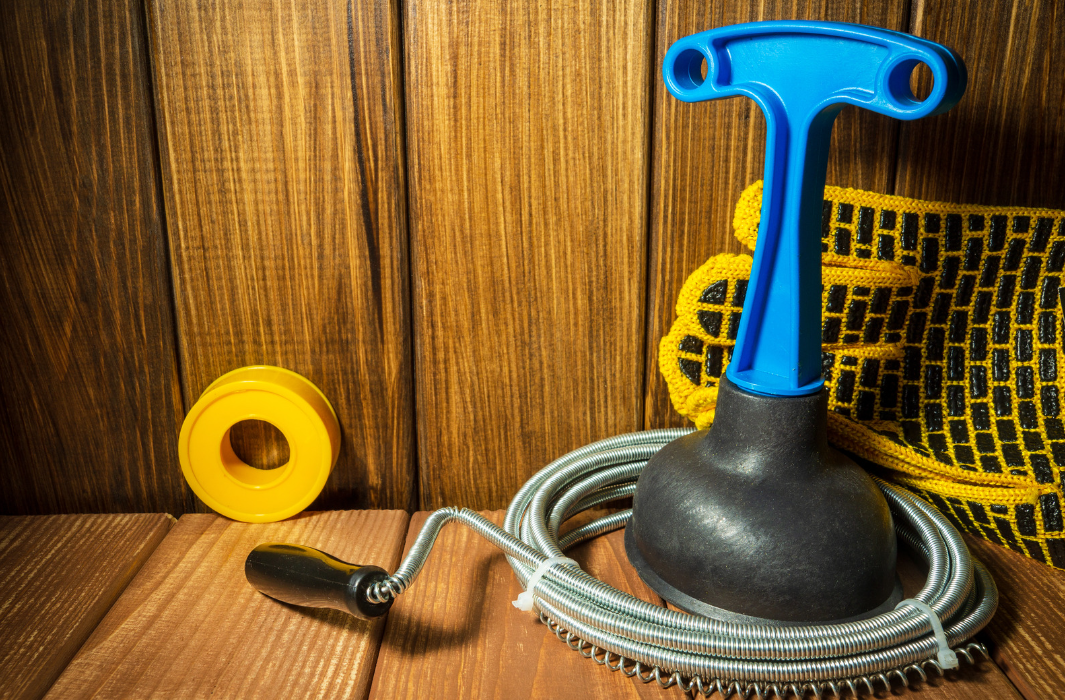How to Unblock A Soil Pipe
Dealing with a blocked soil pipe can be a daunting task. However, with the right approach and tools, you can clear the blockage yourself. This guide will walk you through the process of unblocking a soil pipe, ensuring you can tackle the issue efficiently and safely.
Evaluate the Blockage Before Taking Action
Before rolling up your sleeves, it's crucial to assess the severity of the soil pipe blockage. Keep an eye out for tell-tale signs like slow drainage, gurgling sounds, or water backing up into sinks, showers, or toilets.
DIY Methods to Clear a Clogged Soil Pipe
For Minor Clogs:
Use a flange plunger designed for the job to create a tight seal. Fill the toilet bowl or kitchen sink with enough water to cover the plunger cup and plunge vigorously for 15-20 seconds. The forceful suction can dislodge minor clogs.

For Moderate Clogs:
For more stubborn clogs, a drain snake can be inserted into the soil pipe to break up the obstruction. This long, metal cable with a corkscrew-like tip can reach deeper into the pipes and break up blockages. Here's how to use it:
- Locate the Access Pipe: Modern soil pipes often have access points called "cleaning eyes" located strategically to allow for clearing blockages. These are usually discreetly placed around bathrooms or utility areas. Consult your user manuals or schematics to identify their location.
- Prepare the Area: Place a bucket underneath the access point to catch any escaping water or debris. Wearing gloves, goggles, and a mask for protection is recommended, especially if the clog has been there for a while.
- Open the Access Pipe: Carefully remove the cover using the appropriate tools (screwdriver, wrench) as specified by the cover design. Remember, a slow and steady approach is key to avoid damaging the cover or surrounding pipework.
- Use A Drain Snake: Insert the drain snake into the access pipe, ensuring it's feeding into the main pipe and not getting stuck on any bends. Slowly push the snake in, turning the crank handle (if your snake has one) to feed it further.
- Feel for the Blockage: As you push the snake, you may feel resistance when encountering the clog. This is your cue to start rotating the crank handle to break up the blockage. Maintain a steady pace and avoid forceful cranking to prevent damaging the pipes.
- Clearing the Clog: Once you feel the resistance lessen, continue feeding and turning the snake to break up the clog further. You might need to remove and re-insert the snake a couple of times to completely clear the blockage.
- Clean Up and Test: Once you're confident the clog is gone, pour hot water down the drain to flush out any remaining debris. Close the access pipe securely, clean the area, and dispose of any debris properly. Run water through the drains again to test if the flow has returned to normal.
For External Clogs:
If you suspect a blockage outside, signs include slow drainage in multiple fixtures, gurgling sounds when flushing, or even sewage backups, there's a high chance the clog is located outside your house and requires immediate professional attention. However, there are a couple of DIY methods you can try for minor clogs before calling a plumber:
- Locate the Inspection Chamber: These are the access points to the main underground drainage system and could be found near your house's foundation or buried in your garden. Search for circular or square covers with metal handles. Before opening the inspection chamber, be aware that trapped gases and wastewater may be released, so always wear gloves, goggles, and a mask for protection. Proceed with extreme caution and only if you are familiar with the procedure and stop immediately if you encounter significant resistance or suspect a broken pipe.
- Rodding the Drain: If the blockage is accessible from the inspection chamber, you can try using drain rods. These are long, metal rods that can be screwed together and pushed down the pipe to break up the clog. See our article "Tips For Keeping Household Drains Clear" for more instructions.
Remember: Safety is paramount. If you're unsure about the location of the blockage, the severity of the clog, or your ability to handle the job safely, calling a professional plumber is always the best course of action. They can not only fix the problem efficiently but also prevent further damage to your plumbing system.
When to Call in the Professionals
- Extensive Blockage: If you’ve tried the above methods without success, it’s time to call in the professionals. Persistent blockages may require specialised equipment or indicate a more serious issue.
- Damaged Pipes: If you suspect damaged pipes caused by the clog or during your attempts to clear it, call a plumber to assess the situation and make necessary repairs.
- Root Infiltration: Tree roots can burrow into pipes and cause significant blockages. A plumber can identify and remove root intrusion and may recommend solutions to prevent future problems.
Preventing Future Clogs
- Mind What Goes Down the Drain: Avoid flushing anything other than toilet paper and human waste. Grease, cooking oil, coffee grounds, and feminine hygiene products can all contribute to blockages.
- Regular Drain Maintenance: Pouring a pot of boiling water down your drains occasionally can help to melt and dislodge grease build-up. Enzyme drain cleaners can also be used periodically for preventative maintenance.
Conclusions
By following these steps and taking preventative measures, you can keep your soil pipes flowing freely and avoid the unpleasantness of a blocked drain. But remember, if you encounter a stubborn clog or suspect more serious plumbing issues, don't hesitate to call a professional for a swift and effective solution.










